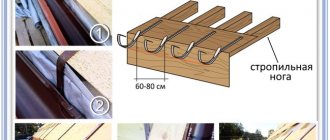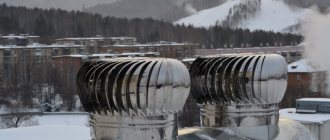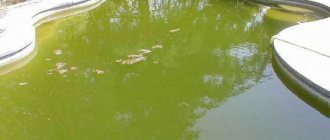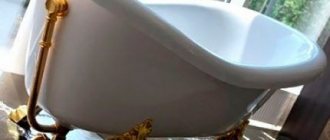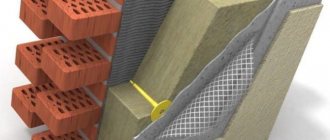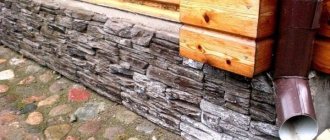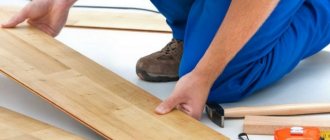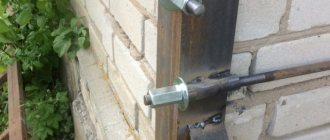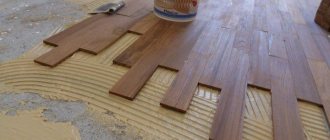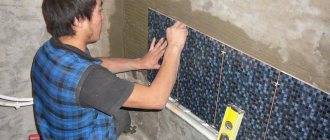Soft roofing refers to durable, elastic, lightweight rolled or sheet profiled materials, as well as mastic compositions .
Most of them are made on the basis of fiberglass, natural cellulose fiber, modified bitumen, mineral fillers (stone chips) and resins. The result is a multi-layer “pie”, which is comparable in strength to steel, but has no disadvantages: it does not rust, absorbs noise, and has good thermal insulation properties.
Where and for what is soft roofing used?
Soft roofing is suitable for roofs of various shapes , including the following types:
- dome;
- vaulted;
- attic;
- flat;
- with turrets and kinks.
You can cover the roof with soft materials yourself.
There are many varieties of soft roofing materials. They are selected depending on the slope, roof shape, house design and the desired effect. For example, if liquid tiles are laid on horizontal surfaces, then soft tiles can be laid on roofs with an inclination angle of more than 15 degrees.
Required tools:
Before starting work, you need to ensure that you acquire the necessary tools. You may need:
Roofing knife - for cutting single-layer tiles.
A special mechanical or pneumatic cutter for cutting multi-layer bitumen shingles.
Metal scissors - for cutting metal strips or reinforcing profiles.
Stapler - for fixing roofing films.
Guide bar - for even cutting of shingles in valleys, on ridges or junctions.
Hammer, saw, drill, screwdriver - for installing the rafter system and fastening various elements.
Construction hair dryer - for heating bitumen shingles or components (valleys, ridges) in the cold season.
Characteristics of soft roofing
Soft roofing is a reliable and durable material that does not rust, does not rot, and does not harbor insects . It does not freeze, absorbs noise perfectly, the roof does not need to be additionally waterproofed, and the material does not absorb moisture.
Light and small-sized sheets can be transported in the trunk of a car and, without construction equipment, manually lifted onto the roof and laid independently. It is very beautiful - you can choose any color of the coating.
Soft roof structure
The soft roof structure has several layers:
- Base. It is made of fiberglass, thick cardboard or cellulose cloth. It gives the coating a high level of resistance to tearing, stretching, and resistance to deformation from high temperatures.
- Impregnation, or bitumen binder, which is applied to both sides of the canvas. Provides insulation of roofing material. It may contain several types of bitumen.
- Decorative mineral chips. Gives the coating color and protects the bitumen from environmental influences and mechanical damage.
- Adhesive layer. It is located on the underside of the sheet, with its help the sheet is attached to the flooring.
The outer layer is a flat sheet consisting of thin glass strands that are pressed with a binder. This glass base is impregnated with bitumen on both sides. The front part of the tile is covered with stone granulate, usually basalt is used.
The bottom layer is a self-adhesive base that is attached to the roof sheathing . During transportation, this layer is covered with film to avoid damage.
Types of bitumen used:
- oxidized: this is artificially aged bitumen, with a very high level of heat resistance;
- SBS-modified: with the addition of artificial rubber, which improves the flexibility of the material and increases its strength in low temperatures;
- APP-modified: atactic polypropylene is added, which gives the finished material the ability to withstand high temperatures, plasticity, and high adhesive properties.
Soft tiles are manufactured in various cutting options. It can be in the shape of a rectangle, rhombus, oval or hexagon, wavy, triangular, in the form of shingles, “brick”, “beaver tail”, “dragon tooth”.
Bottom Layer Properties
The lower part of the material is adhesive, as a result of which it is covered with a film or sand coating. During installation, this protection is removed, gluing the surfaces. This process can be accelerated by heating the material.
When storing soft roofing, it is important to ensure that each sheet is insulated , otherwise they will become unsuitable for further use. When installing the material, it should be taken into account that low temperatures will not allow the material to self-stick and will also shorten its service life. Very low temperatures will cause the shingles to break.
Comparison of manufacturers' pricing policies
Flexible tiles presented on the construction market differ not only in characteristics and manufacturers, but also in price. One of the determining factors in the sales rating of roofing material is its price.
Saving on the cost of a material does not mean ensuring the effectiveness and practicality of its use over a long period of time. This is due to the fact that manufacturers of inexpensive soft roofing set a low price, saving on the quality of raw materials in its production.
This policy is practiced by little-known and small manufacturing companies. When answering the question of which tiles to buy, experts do not recommend choosing inexpensive lines from a little-known manufacturer.
Well-known manufacturers who produce soft roofing materials use only the highest quality materials and modern equipment, which increases the cost of the material.
Pros and cons of soft roofing
Soft roofing has its advantages:
- ensures ease of installation due to its low weight;
- sintered into a solid, hermetic canvas, slightly melting under the sun's rays;
- designs any slopes of the most complex design;
- allows you to save on installation;
- provides noiselessness, heat and waterproofing;
- offers a large assortment of colors, models with different shingle shapes;
- maintaining performance characteristics at different temperatures;
- high level of fire safety;
- reduces costs due to a small amount of waste, subject to correct calculation of materials;
- high moisture resistance;
- allows for local repairs if necessary;
- long service life (up to 50 years);
- affordability;
- no risk of corrosion - there is no metal in the coating;
- does not require installation of a lightning rod;
- installation is carried out without the use of specialized tools.
However, there are also disadvantages :
- when laying shingles, the requirements for ventilation of the under-roof space increase;
- additional costs for the lining carpet and the complex structure of the roofing pie increase the total cost;
- accumulates garbage and gets dirty quickly;
- fits in the warm season, at sub-zero temperatures the level of adhesion of materials decreases;
- supports combustion, although the shingles are protected from fire from above;
- low level of thermal insulation;
- low frost resistance.
Piece bitumen shingles
This type of tile performs best among complex soft roofs. It has become especially widespread in the field of private construction. The material is suitable for covering almost any pitched roofing; for it, the steepness does not matter.
Piece tiles combine the pleasant appearance of ceramic products, the insulating properties of rolled varieties, as well as the solidity of self-leveling roofing (heating sinteres fragments of the coating into a solid cover).
Types of soft roofing
Soft tiles are divided into different types:
- coarse- and fine-grained;
- single-layer, multi-layer or laminated;
- with metal coating.
The type of flexible tiles is selected in accordance with the type of roof, the slope of the slope, the purpose of the building, price and other circumstances . Let's look at the types in more detail to make your choice.
Roll materials
Bitumen-polymer materials are usually used for flat roofing of large areas, for example, for industrial buildings and structures. Their advantages are that they can be laid on a roof with a slope from 0 to 45 degrees. However, laying such a roof is quite difficult - in order to make a continuous monolithic surface, you need to connect the joints using special burners, that is, melt them.
Advantages:
- waterproof;
- high sound insulation properties;
- resistance to low temperatures;
- low price;
- easy installation: instructions are included with the rolls;
- easy transportation;
- possibility of repair.
The disadvantages are that the abundance of material on the market increases the risk of purchasing a fake with low characteristics. It is also recommended to strictly follow the instructions: deviations from the technology lead to the appearance of cracks and tears in the future.
Mastic materials
Mastic materials are a liquid bitumen emulsion with polymer and rubber additives that resemble melted resin. The composition is applied using a roller exclusively to a solid monolithic surface, for example, concrete. The peculiarity of this roofing is that it can be applied to an uneven roof with bumps, depressions and cracks. Mastic materials are not suitable for pitched roofs.
Advantages:
- can be laid on a waterproofing layer;
- does not create seams, providing reliable waterproofing;
- resistant to temperature conditions and the influence of bacteria;
- highly adhesive;
- high drying speed, which allows you to quickly complete work.
Among the disadvantages is the impossibility of laying on roofs with a slope of more than 30° and at temperatures below zero. When laying the material, you need to choose dry weather, since moisture does not allow the mastic to adhere properly to the surface and disrupts the waterproofing.
Polymer membranes
Membranes are made from various polymers (reinforced polypropylene with rubber). Membrane materials are quite elastic, strong and durable .
Roof installation is possible at any slope slope. The angle of the slope affects the choice of fastening method. For example, a large angle dictates mechanical fastening, a complex roof structure requires gluing. Mainly used to cover residential or public buildings.
Advantages:
- resistant to mechanical damage;
- burn poorly;
- resistant to UV radiation, do not fade in the sun;
- simple and quick installation due to self-adhesive film;
- The roll width is large enough to cover any area;
- does not need protection from moisture;
- Installation work can be carried out regardless of the time of year.
However, despite all the advantages, it has low resistance to oils and solvents. It also contains volatile substances that evaporate over time.
Profiled bitumen materials
Elastic corrugated bitumen materials are one of the most versatile and practical to use . Light, strong, elastic and durable sheets do not rot. Outwardly, they look like ordinary natural tiles. At the same time, the volumetric sheets do not lose their shape and can be installed independently. Such a sheet is a multilayer material made of impregnated specially prepared bitumen with resins and mineral chips and several layers of elastic paint.
Advantages:
- ensures reliable operation of the waterproofing system;
- promotes the formation of water drainage;
- protects the building from fungi, mold, and plant germination;
- Unaffected by alkalis and acids.
The reliability of the seam connection is enhanced by the presence of a double lock and additional seam gluing.
Bituminous shingles
Flat sheets (shingles) with a figured outer edge along the length (teeth of different shapes and sizes) are often compared in appearance to natural tiles. This material is made from fiberglass, which is then impregnated with bitumen and fine stone chips (crushed shale or basalt) are applied. It can be mounted on a roof with a slope of 10 degrees and is suitable for complex roof structures of any shape. It is laid overlapping and only on a solid base, and not on a sheathing (for example, OSB boards).
Advantages:
- the rough surface retains snow masses;
- condensation and fungi do not form;
- has high flexibility;
- It is used sparingly when cutting, which is especially beneficial for roofs with a geometrically complex surface;
- unpretentious in operation: easy to install on any surface;
- durable - used up to 100 years.
Speaking about the disadvantages, it should be noted that the material softens in the sun; replacing the roof without a specialist is difficult. In addition, in winter it becomes brittle, so installation is not recommended.
Onduvilla
Wavy flexible tiles. Keeps its shape, is not damaged during transportation, can be cut with a grinder, a hacksaw or even a sharp knife. On a roof with an angle of inclination from 9 to 20 degrees, it is laid on plywood or OSB. If the angle is 20 degrees or more, then it can be laid on a timber sheathing.
Advantages:
- high strength: the material can withstand a load of 960 kg/m2;
- service life: 50 years;
- high level of water resistance: solar heat acts on the sheets and promotes their soldering, forming a solid coating;
- ease of installation allows you to do it yourself, without the involvement of a specialist;
- excellent sound insulation due to the elasticity of the material;
- ease of transportation.
Over time it fades a little in the sun.
Voting by our readers
Which of the proposed models of flexible tiles would you choose or recommend?
CertainTeed Landmark
0.00 % ( 0 )
GAF Timberline Ultra
0.00 % ( 0 )
Icopal Plano Natur
0.00 % ( 0 )
Katepal Katrilli Dune
50.00 % ( 2 )
TechnoNIKOL Shinglas
0.00 % ( 0 )
Onduvilla
25.00 % ( 1 )
Ruflex Runa
0.00 % ( 0 )
Dock Europa
0.00 % ( 0 )
Kerabit L+Cedar
0.00 % ( 0 )
How to choose the right soft roof?
Soft roofing, the types and prices for which you can easily find on the official website, is selected based on its characteristics. What is important to consider when choosing :
- Number of layers – one or several. Multilayer tiles give a holographic effect, which looks beautiful. Does not require a starting strip, and when laying, no adjustment of the pattern. More durable and less exposed to the environment.
- Basalt or slate coating. It serves as a protective layer and adds color. Slate tends to fade over time, while basalt does not.
- Color. This parameter depends solely on the design project and the environment.
- How flexible is the roof? Upon visual inspection, it should bend easily and restore its shape without cracks or tears.
- Reinforcement type: fiberglass, fiberglass or polyester.
- The smell of bitumen should not be noticeable, and the granulate should adhere firmly to the surface without crumbling.
- Manufacturer. Pay attention to the originality of the material, this way you will eliminate the risks of purchasing a low-quality product. Purchasing a roof through the official website of Ondulin will save you from these problems.
To check the quality of a soft roof, you need to pay attention to its rigidity: if the material is very hard, it will be difficult to work with and will not satisfy all the requirements for installing a high-quality roof.
Preparation as a guarantee of durability: roofing cake for flexible tiles
Before installing soft tiles, it is necessary to carry out a number of preparatory work to create a roofing pie:
- provide vapor barrier;
- install the sheathing and counter-lattice;
- insulate the structure;
- apply waterproofing (this stage can be combined with vapor barrier);
- create a ventilation system.
After this, you can proceed directly to laying bitumen shingles.
NOTE!
When arranging the roofing pie, it is necessary to strictly follow the sequence described above. However, the thermal insulation stage can be skipped if you are planning an attic with a cold roof , limiting yourself to installing a waterproofing layer.
Roofing pie
Soft roof structure
Roof shingles will last longer if they are placed on a prepared base. This includes the installation of continuous sheathing. The main requirement for a roof is the necessary strength and a flat surface .
Strength ensures that the roof will not be damaged by excessive loads from snow or the weight of a person.
Evenness provides resistance from snow, rain, and sudden gusts of wind.
There should be a pitch of no more than 500 mm between the rafter legs. With a larger step, there is a possibility that a rough sheathing will be needed, and then a solid one will be installed on it. The counter-lattice will not allow the sheathing to sag due to a large amount of snow, which will extend its service life.
When insulating the roof, it is necessary to create a backing to lay insulation, hydro- and vapor barrier .
Soft roof installation technology
Flexible tiles provide four methods of installation technology :
- ballast: the membrane is attached by welding and glue, after which ballast is laid from crushed stone, pebbles, gravel;
- heat-welded: used most often, it involves heating the sheet with hot air;
- mechanical: used in case of a weak roof that is not able to withstand ballast. Installed using telescopic fasteners;
- gluing: special adhesive-based mixtures attach the membrane. The method is not common and is used only if no other can be applied.
The choice of method depends on the technical specifics of the building and the installation situation.
Soft roofing is very beneficial for roofs with a large slope and is suitable for the most complex roof configurations. This material is laid on the most complex surfaces with a high degree of precision of joints and fits.
Installation of soft tiles is best done in the warm season, when the air temperature is above 5°. The presence of sunlight will allow additional heating of the shingles, which will improve the tightness of the roof. Installation in colder times is possible, but complicated: for example, for gluing you will need a hair dryer that heats the shingles and allows you to lay the material on the folds of the roof. In addition, shingles must be stored in a warm room, so they will need to be transferred from there individually when installed.
First, the slope of the surface is checked. The slope must be at an angle greater than 12°, otherwise water will stagnate, which will reduce the life of the coating.
Next, the base is prepared. Soft roofing is laid on a material that is not prone to delamination, with a relative humidity of no more than 20%. This could be FSF plywood, edged board, chipboard or wood board. The roof is laid using a self-adhesive layer and nails. The best grip will be provided by the lining carpet. Flexible tiles are secured with special nails that have a flat head. Each of them is covered with the next, upper, shingle. Some areas will require additional elements, which are specified by the manufacturer in the instructions.
When laying, you should remember about the ventilation outlets; it is necessary to create an air gap between the waterproofing and the base. The installation itself proceeds from the center of the roof to the ends, each subsequent row is superimposed on the previous one. The chimney outlet is additionally insulated, and protection is also created here using rubber seals.
Insulation
If it is necessary to insulate a room or attic, insulation for flexible tiles is used. The material recommended by experts for insulation is mineral wool based on basalt or glass wool. They are easy to install and are even suitable for installation in hard-to-reach places. At the same time, they do not form cold bridges and protect well from temperature changes.
CAREFULLY!
The minimum thickness of the material is 150 mm , and for regions with severe frosts - 200 mm or more .
Laying of roll materials
Roll materials are more often used for the construction of large industrial facilities. They are also convenient and profitable to use for flat roofs of apartment buildings. In any case, the roof slope should be no more than 30° .
First, the base is leveled, hydro- and vapor barriers are laid, and mastic and primer are prepared. You need to glue from the corner opposite to the place where you climb onto the roof. The coating is fixed to the base with mastic heated with a burner if there is no self-adhesive layer. Typically, the material is laid in several layers, overlapping the joints with the next one. The layer is rolled with a roller.
Installation of underlay carpet
This roof element carries the function of protecting against possible leaks of the roof structure.
When laying a coating such as bitumen shingles, the technology requires mandatory compliance with existing installation standards (more details: “Flexible tiles: installation technology”). According to them, if the roof slope is more than 18 degrees, an additional layer of rolled insulation, for example, roofing felt, should be laid at a minimum width of 40 centimeters from the edge along the ends and edges of the roof eaves, which are potentially the most likely areas for water penetration . The best solution would be to drain the material to the façade surface. The roof ridge also needs to be covered with an insulating layer so that on each side the material is at least 25 centimeters long.
What does a soft roof look like: photos of finished projects
The variety of types of soft roofing allows you to choose your own unique look for each home.


